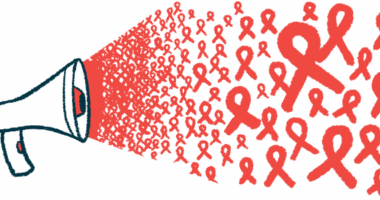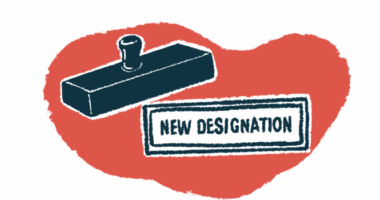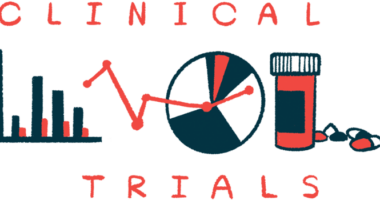Pain management guide for Duchenne muscular dystrophy
Last updated May 5, 2025, by Agata Boxe

Managing pain is an important part of living with Duchenne muscular dystrophy (DMD), a progressive neuromuscular disease that causes muscle weakness and muscle loss over time.
DMD-related pain can have a major impact on everyday life, affecting mobility, daily routines, and work and family life.
Whether you are living with the disease or caring for a loved one who has it, there are ways to help manage DMD pain. From building a multidisciplinary care team to incorporating daily strategies into your routine, it is possible to nurture your physical and emotional well-being with DMD.
Understanding pain in DMD
Pain with DMD can show up in different ways. It can be acute, meaning it comes on quickly and goes away within a short time or gradually. Or it may be chronic, lasting more than three months and requiring ongoing treatment.
People with DMD often experience pain in more than one area, commonly in the muscles and joints. In some cases, neuropathic pain, which is caused by nerve damage, may also be present with DMD. Contractures or tightening of muscles, tendons, and skin can also trigger DMD pain.
The exact locations of pain can vary and may include the legs, the neck, and the back. The specific causes of this pain can also vary depending on age and other factors. For example:
- In young children ages 10 and below, toe walking and tendon shortening may lead to musculoskeletal pain.
- In teens ages 11 to 17, scoliosis and poor posture may cause back or muscle pain.
- In adults, prolonged sitting or uncomfortable positions, such as those from wheelchair use, may cause musculoskeletal pain.
For caregivers, identifying pain can sometimes be difficult, especially if a child is too young to describe it or has difficulty speaking. In these instances, it is helpful to know the common signs of pain with DMD, such as:
- facial grimacing
- clenched teeth
- trouble sleeping
- unexplained mood changes
- avoiding activities that could trigger pain.
Daily strategies to reduce pain
Because pain with DMD can be so complex, certain daily strategies are often needed to address it. These may include using assistive devices and adaptive equipment, and participating in occupational and physical therapy specifically designed for DMD pain.
Physical therapy, for example, can play a key role in DMD pain management by helping to reduce muscle stiffness, a common source of pain, and increasing mobility. A physical therapist may suggest:
- exercise programs to improve muscle strength
- stretching exercises for DMD
- massage, heat, or cold therapy for pain relief.
They might also recommend assistive devices such as braces and splints to support your muscles and help prevent contractures.
In addition to physical therapy, an occupational therapist can assist you or your loved one in finding ways to do daily tasks, such as getting dressed, eating, or showering, with reduced pain and discomfort.
They can also recommend modifications to your or your loved one’s home, work, or school to make the environment more comfortable. These adjustments might include:
- modified utensils
- dressing aids
- specialized seating
- grab bars
- widening doorways
- lowering countertops.
Medication management
If you or your loved one with DMD experiences pain, you should report it to your (or their) doctor as soon as possible.
They may recommend medications for DMD pain relief, which may include those that lower inflammation, a common contributor to pain, and those that relax the muscles and relieve muscle spasms.
Be sure to follow their treatment recommendations closely by staying on top of your or your loved one’s medication schedule. One way to do this is to utilize helpful tools, such as phone alerts or smart devices.
Discussing pain with healthcare providers
DMD pain should be treated just like any other symptom of the disease and should be taken seriously by providers. Open communication with your or your loved one’s healthcare team can help identify the best ways to manage it.
Start by tracking pain symptoms, noting details such as pain location and intensity (on a scale of one to 10). Share these notes with your doctor (or your child’s doctor) and talk about how the pain impacts your or your child’s life.
If medication is prescribed, document how well it works. Don’t hesitate to ask for another solution if it’s not working. The provider may prescribe an alternative treatment that may be more helpful.
Supporting emotional well-being
Dealing with DMD pain can take a toll on the mental health of people with Duchenne and their caregivers. As challenging as it can be, try your best to manage its potential impact on your emotional well-being.
Relaxation techniques such as deep breathing and mindfulness meditation can help you reduce the stress often caused by dealing with pain and other DMD symptoms, such as fatigue and issues with mobility. Talking to a therapist can also offer other helpful tools for living with a chronic condition.
Finding a supportive community can make a big difference, too. Online spaces like the Muscular Dystrophy News Today Facebook group offer a way to connect with others who understand what you’re going through.
Finally, if you are a caregiver, encourage your loved one to discuss their pain with you openly. Having someone to listen to their concerns can make a difference in how they feel emotionally.
And remember to also take care of your own well-being through DMD caregiver support. Emotional support for DMD caregivers can be found through the Caregiver Resource Network’s virtual group.
Working with a care team to build a personalized plan
Building a multidisciplinary care team is often essential for managing DMD pain. This team might include:
- a neurologist
- a pain specialist
- a physical therapist
- an occupational therapist
- a mental health expert.
Because DMD is a progressive disorder, pain symptoms may change over time. Regular check-ins with this care team ensure that your or your loved one’s treatments stay up-to-date and effective.
Ultimately, managing DMD pain requires a coordinated, comprehensive, and personalized approach. With the right support and healthcare team, it is possible to improve the quality of life for people with DMD and those who care for them.
Muscular Dystrophy News Today is strictly a news and information website about the disease. It does not provide medical advice, diagnosis, or treatment. This content is not intended to be a substitute for professional medical advice, diagnosis, or treatment. Always seek the advice of your physician or other qualified health provider with any questions you may have regarding a medical condition. Never disregard professional medical advice or delay in seeking it because of something you have read on this website.






